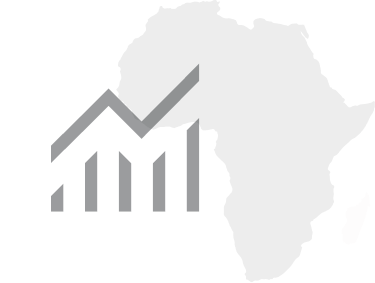African governments have failed to translate economic growth into improved sustainable economic opportunity for their citizens
22 November, 2018
The opinions expressed in this article are solely those of the author, and do not necessarily reflect the opinions or views of the Mo Ibrahim Foundation.
The 2018 Ibrahim Index of African Governance (IIAG) Report explores, amongst others, the relationship between the performance of African countries in the Sustainable Economic Opportunity category in the IIAG and economic growth as measured by Gross Domestic Product (GDP). Sustainable Economic Opportunity measures the extent to which governments enable their citizens to pursue economic goals and provide them with the opportunity to prosper, based on four sub-categories: Public Management, Business Environment, Infrastructure and Rural Sector.
On average, the high level of economic growth seen on the African continent over the past decade (2008-2017) has not resulted in improved scores in Sustainable Economic Opportunity. Indeed, Sustainable Economic Opportunity has been the worst performing and slowest improving category of the IIAG over the past ten years on average. Africa’s 2017 Sustainable Economic Opportunity score is 44.8 (out of 100.0), only +0.1 points higher than in 2008, a percentage increase of +0.2%. In contrast with such a marginal improvement, the continent’s combined GDP has increased by +39.7% over the same period.

Of the ten African countries with the largest GDP in 2017, only four feature in the ten highest performing in Sustainable Economic Opportunity on the continent: Egypt, Kenya, Morocco and South Africa. In opposition to this, another four of the ten largest economies on the continent obtain a score that is below the 2017 African average Sustainable Economic Opportunity score: Algeria, Angola, Nigeria and Sudan. Meanwhile, two of the smallest economies on the continent, Cabo Verde and Seychelles, obtain the 6th and 5th highest scores in Sustainable Economic Opportunity.

It is worth highlighting the case of Nigeria, which hosts the largest working age population (15-64 years old) on the continent in 2017 (101.7 million). Despite improving by +2.7 points since the beginning of the decade, Nigeria’s score in Sustainable Economic Opportunity has declined by -0.1 over the past five years (2013-2017). With a score of 43.5, Nigeria only ranks 29th in Sustainable Economic Opportunity in 2017, a low performance at odds with the country’s percent increases in GDP and in working age population over the past decade (+80.6% and +26.9%, respectively).

Moreover, the 2018 IIAG Report also shows a weak correlation between the size of a country’s GDP and scores in Sustainable Economic Opportunity in 2017 (r= +0.19) and across the entire time series (2008-2017) (r= +0.16). Similar results are seen when comparing GDP per capita and Sustainable Economic Opportunity performance.

As put by the joint African Union (AU) and Organisation for Economic Co-operation and Development (OECD) Africa’s Development Dynamics 2018 report, “the continental trend is one of resilient but jobless growth”. Confirming this, the IIAG’s Satisfaction with Employment Creation indicator, a perception-based indicator sourced from Afrobarometer, has seen an African average decline of -3.1 points over the decade. Furthermore, there does not appear to be a strong correlation between GDP growth, and either the unemployment rates of African countries (r= -0.05), or scores in Satisfaction with Employment Creation (r= +0.17).

A potential explanation for the lack of relationship over the last decade between GDP growth, general unemployment rates, and scores in Satisfaction with Employment Creation is that growth has been mainly commodity-led. African countries have struggled to take advantage of the boom in raw commodity prices to diversify their economies, as shown by the trajectory of the African average score for the Diversification of Exports indicator, which decreased by -4.0 points over the decade. With a score of 14.7, it constitutes the lowest African average score of all 102 indicators in the 2018 IIAG.

Of Sustainable Economic Opportunity’s four underlying sub-categories, Business Environment measures whether governments provide an environment that enables business activity. The dismal trajectory of the African average score for Business Environment, which has deteriorated by -4.9 points since 2008, contrasts with the steady increase in the percentage of the African working age population (from 55.0% of Africa’s citizens in 2008 to 55.7% in 2017). This is particularly worrying as it underscores the weak foundations of many African countries to be able to provide decent jobs for their ever-growing working age populations.

Between 2015 and 2050, Africa’s working age population is projected to increase by +901.8 million people. To put this into context, in the same time period, the number of working age people is projected to increase by +263.3 million in India, and drop by -84.5 million in Europe and by -199.9 million in China.

In such a demographic context, there will be a larger workforce supporting relatively fewer children, thanks to declining birth rates, and elderly people. This 'demographic dividend' could mean that by 2030 Africa may increase its annual GDP per capita growth by up to half a percentage point. However, if Africa's growth patterns remain unchanged and not enough jobs are created to match the expanded labour supply, the dividend could turn into a threat, discouraging young people from actively seeking employment, lowering the labour market participation rate, or making them unable to find a job, increasing unemployment and the informal economy. Apart from economic losses, this could also lead to brain drain, political and social unrest, instability and armed conflict.


